Fans, such as exhaust and intake fans, play a vital role in a grow tent’s ventilation system. They help remove stale air, excess heat, and humidity while bringing in fresh air to promote optimal plant growth and maximize yields.
The benefits of choosing the right size include efficient air circulation, mold and mildew growth prevention, and improved plant health.
On the other hand, choosing the wrong fan size can lead to inadequate ventilation, poor air quality, and stunted plant growth.
When selecting a required fan size, consider factors such as the total volume of your grow room, the desired air exchange rate, and the type of plants being grown.
Common mistakes to avoid include undersizing the fan, which can lead to inadequate airflow, and oversizing the fan, resulting in unnecessary energy consumption and noise levels.
Table of Contents
Why does proper fan sizing matter?
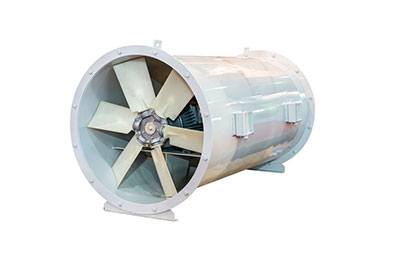
Choosing the correct grow tent fan size for your grow tent is crucial for maintaining optimal airflow and ventilation.
Inadequate airflow can occur if you select an intake fan that is too small for the size of your grow tent. Insufficient air exchange can lead to stagnant air, poor ventilation, and an accumulation of heat and humidity. This can create an unfavorable environment for plant growth, potentially causing issues such as mold and mildew development, reduced oxygen levels, and stunted plant growth.
On the other hand, choosing an intake fan that is too large for your grow tent can also have negative consequences. An oversized intake fan size will draw in excessive amounts of air, leading to rapid air exchange and potential temperature drops within the grow tent. This can disrupt the plants’ microenvironment and cause fluctuations in temperature and humidity levels, which can stress the plants and affect their overall health and productivity. Additionally, an oversized intake fan may consume unnecessary energy and produce higher noise levels.
How do I calculate the fan size I need for my grow tent?
To calculate the fan size you need for a grow tent, it’s necessary to consider the calculation of base fan requirements, adjustment of filters, the capacity of the fan, and the intake fan’s CFM. The following steps illustrate the formula.
1. How do you calculate the fan base?
To calculate the base fan requirement for your grow tent, you first need to determine the Cubic Feet per Minute (CFM).
To determine the volume, which represents the required airflow in CFM, you need to multiply the width by the length and then by the height of the grow tent. The following formula can express this:
Volume (Required CFM) = Width x Length x Height
For example, if your grow tent has dimensions of 4 feet in width, 4 feet in length, and 6.5 feet in height, you can calculate the required CFM using the formula as follows:
Volume (Required CFM) = 4 feet (width) x 4 feet (length) x 6.5 feet (height) = 104 CFM
So, in this case, your grow tent would require a fan with a minimum CFM rating of 104 to ensure adequate ventilation and maintain the desired growing conditions.
2. What are the factors that affect fan size for indoor growing?
The factors that affect the fan size for indoor growing are the volume of the room, air exchange frequency, carbon dioxide filter, external heat, ducting, and grow light heat sources.
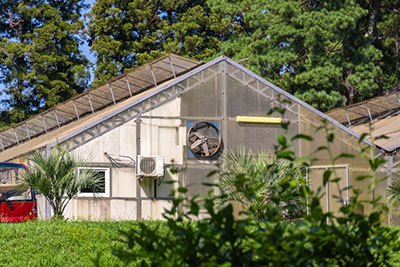
- Volume of The Room/Tent: The size of the space, measured in cubic feet, determines the amount of air that needs to be circulated for proper ventilation. A small grow tent with a volume of around 4 cubic feet will require a smaller fan, a 6” exhaust fan. A large grow tent of 10×10 requires a 16” exhaust fan.
- Air Exchange Frequency: The rate at which the air inside the room or tent needs to be exchanged per minute.
- Carbon Filter: If you are using a carbon filter for odor control, it adds resistance to the airflow, which affects the grow tent fan size needed to maintain proper ventilation.
- External Heat: Consider any external heat sources in the growing area, such as heaters or other equipment. These sources can increase the ambient temperature and impact the grow tent fan size required to cool the space adequately.
- Ducting and Bend in Ducting: The length and configuration of the ducting system can create resistance and reduce airflow. Longer ducting or bends require a more powerful fan to compensate for the increased resistance.
- Grow Lights and Other Heat Sources: High-intensity grow lights and other heat-emitting equipment can significantly increase the temperature in the grow area. Proper ventilation and cooler air are necessary to maintain optimal growing conditions.
In a scenario of the 4×4 grow tent, the following considerations must be taken into account:
- The introduction of one grow light increases the required airflow by 10%.
- Including one filter requires a 25% boost in airflow.
- Incorporating 5 feet of ducting and one 90-degree bend results in a 35% increase in the necessary airflow.
Determining the total percentage increase results in:
10% (grow light) + 25% (filter) + 35% (ducting and bend) = 70% (1.7 decimal)
The ideal formula in this scenario would be:
Fan Capacity Needed = Base Fan Capacity (104 CFM) x Multiplier (1.7)
3. Why do you need to buy fans for grow tents with more capacity than required?
When buying fans for grow tents, purchasing ones with more capacity than required for optimal ventilation is recommended.
Fans help circulate the air inside the grow tent and replace it with fresh air. Having a fan with more capacity ensures adequate airflow and proper ventilation for your plants. Additionally, using a fan at its maximum capacity can decrease its lifespan over time. It is best to get a fan with around 25% more power than needed for optimal air circulation.
4. Why must the operating capacity of the intake fan be smaller than the exhaust fan?
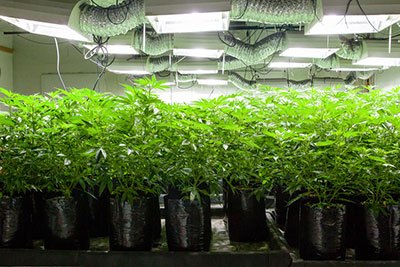
Operating the intake fan at a smaller capacity than the exhaust fan is done to create negative pressure within the grow tent.
This setup ensures efficient air circulation. The larger exhaust fan pulls out more air than the smaller intake fan draws in, creating a vacuum effect. This vacuum effect helps control odors by containing them within the tent. It also aids in regulating temperature and humidity levels by removing excess heat and moisture buildup.
Additionally, negative pressure reduces the risk of pests and pathogens entering the grow space. Maintaining the correct balance between the intake and exhaust fans is essential for optimal results.
Finally, the estimated fan capacity is 1.25, which is equivalent to 25% of the estimated fan capacity; we obtain the optimal fan capacity.
The ideal fan requirement and the final formula for the 4×4 grow tent become:
176.8 CFM x 1.25 = 221 CFM
Based on this outcome, you can select a six-inch fan with an airflow rating of 402 CFM.
What size fan for each different size of grow tent?
When considering the correct fan size for different grow tent setups, it is important to consider the tent size, the number of lights and carbon filters, the length of the ducting, the presence of 90° bends in the ducting, and the external heat source.
The following table represents the fan requirements based on common tent grow sizes.
| Tent Size (Feet) | Number of lights | Number of filters | Duct Length | Duct 90° Bending | External Heat | Exhaust Fan Size | Intake Fan Size |
| 2x2x3 | 1 | 1 | Short | Low | Low | 4-inch | 4-inch |
| 3.3×3.3×5.x3 | 1-2 | 1 | Short | Low | Low-Medium | 4-inch | 4-inch |
| 2x4x5.9 | 2 | 1 | Medium | Low | Low-Medium | 4-inch | 4-inch |
| 4x4x6.5 | 2-4 | 1-2 | Medium | Low-Medium | Low-Medium | 6-inch | 4-inch |
| 4x8x6.5 | 4-8 | 2 | Long | Medium | Medium | 8-inch | 6-inch |
| 5x5x6.5 | 4-6 | 2 | Medium | Medium | Medium | 8-inch | 6-inch |
| 5x10x6.5 | 8-12 | 4 | Long | High | High | 2×6-inch | 8-inch |
| 8x8x6.5 | 8-16 | 4-8 | Long | High | High | 2×6-inch | 2×6-inch |
What is a good fan to get?
When it comes to choosing a fan for your ventilation system, it’s important to prioritize quality over cost. While it might be tempting to opt for a cheaper option, investing in a good exhaust system, including high-quality fans, is worth the expense in the long run.
When selecting a fan, there are 4 key criteria: CFM, noise level, energy efficiency, and fan speed settings.
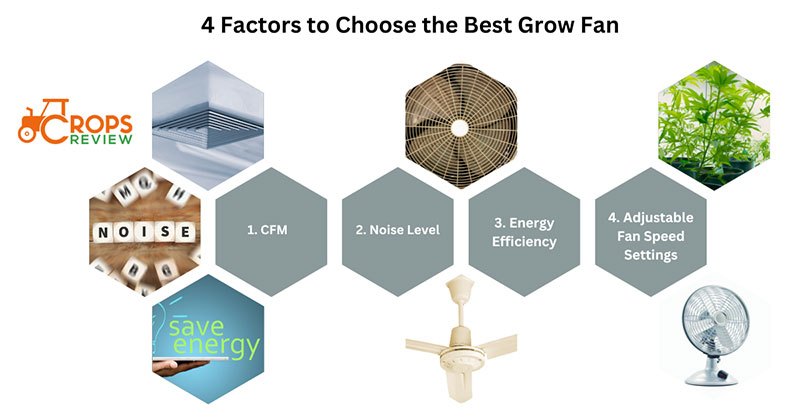
CFM: The fan’s airflow capacity is measured in cubic feet per minute. It should match the size of your grow tent or room to ensure sufficient air exchange. For instance, a small grow tent 2×2 may require a fan of around 100-150 CFM, while larger 8×8 grow rooms require a 1500 CFM fan.
Noise Level: Look for fans that operate quietly, especially if you have your grow tent in a living space or need to minimize noise disruptions. The AC Infinity Cloudline T6 Inline Duct Fans are known for their quiet operation, making them suitable for indoor growers wanting minimal noise disruptions. The ideal noise range is below 50 dB.
Energy Efficiency: Consider fans with energy-saving features to reduce power consumption and decrease operating costs. The Vortex Powerfans VTX Series offers energy-saving fan efficiency features such as EC (Electronically Commutated) motors, which consume less power while still delivering high performance.
Adjustable Fan Speed Settings: Fans with adjustable speed settings allow you to fine-tune the airflow.
Can I use a single fan for both intake & exhaust?
It is generally not recommended to use a single fan for both intake and exhaust purposes. Having separate active air intake fans and exhaust grow tent fans allows for better control over air circulation, reducing the risk of heat buildup and ensuring efficient cooling.
What size carbon filter do I need?
To determine the appropriate size of a carbon filter for your grow space, consider the CFM rating of your extraction fan and the desired air exchange rate. Calculate the required CFM based on the volume of your grow space and the recommended air exchange rate. Then, choose a carbon filter that can handle the calculated CFM. Select a filter with a slightly higher CFM fan capacity for extra airflow.
For instance, if your grow tent measures 4 feet in length, 4 feet in width, and 6.5 feet in height (volume = 104 cubic feet), and you desire 6 air changes per hour, the calculation would be:
Required Carbon Filter CFM = 104 cubic feet x 6 ACH = 624 CFM.
Note that the size of the carbon filter is not necessarily the same as the size of the exhaust fan. Both of their dimensions will vary as the carbon filter is placed in the ventilation system to remove odors, while the exhaust fan is responsible for air exchange and circulation.
Where to place fans and filters?
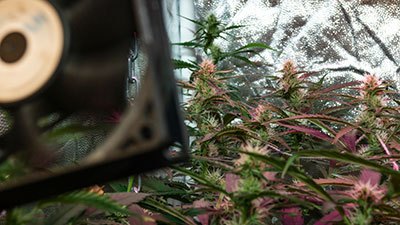
To ensure efficient air circulation, the intake fan should be positioned near the bottom of the space, opposite the exhaust fan. The extractor fan should be placed near the top of the space and as close to the carbon filter as possible. This allows for effective odor and pollutant removal.
The carbon filter should be installed directly onto the exhaust fan, ensuring the air passes through it before being expelled.
Additionally, incorporating oscillating fans throughout the space promotes good air circulation and prevents stagnant areas. Regular cleaning and maintenance of the fans and filters are essential for optimal performance.
What size oscillating fan for a grow tent?
The size of the oscillating fan should be chosen based on the size of the growing space.
For a 5′ x 5′ size grow area or larger, one 16″ wall mount fan is recommended. However, for a grow room measuring 8′ x 8′ or larger, it is usually recommended to have two oscillating grow tent fans.
It’s important to note that the oscillating fan’s CFM (cubic feet per minute) should be equal to or greater than the size of the growing space to ensure proper air circulation.
